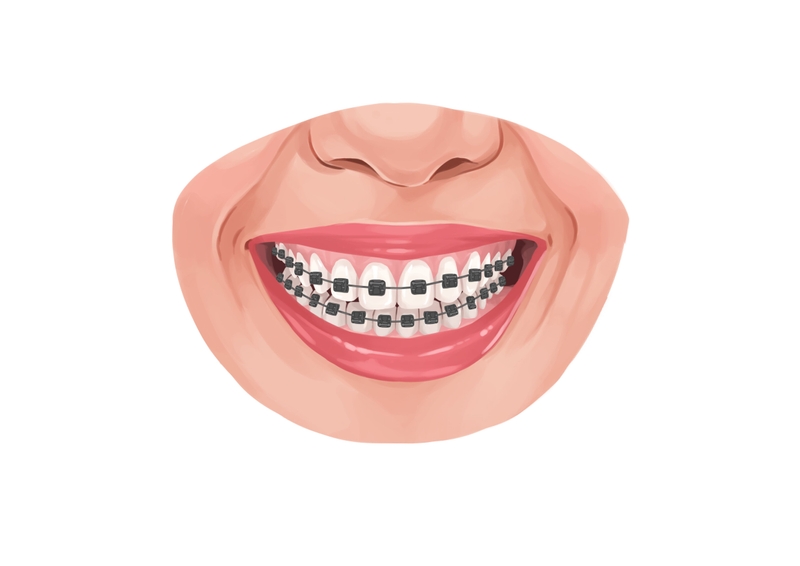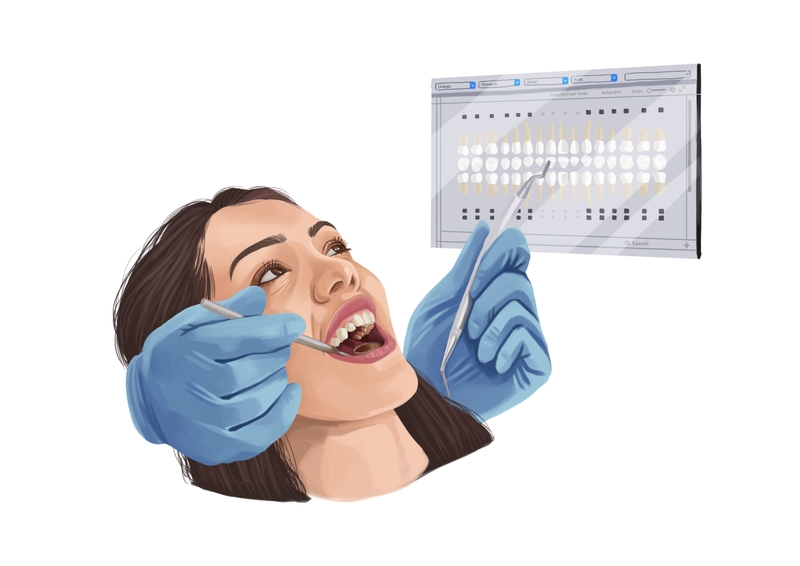- Orthodontic spacers create space between adjacent teeth. This allows for the placement of orthodontic bands and assists in the eruption of partially impacted teeth.
- There are spacers made of rubber and metal. Rubber spacers are the most commonly used.
- It is common to use spacers, but not everyone needs them before orthodontic treatment. Orthodontic spacers are not painful, but they can cause sensitivity.
Do you need spacers before braces? Here's everything you need to know.
What are orthodontic spacers?

Picture by Authority Dental under CC 2.0 license
Orthodontic spacers are used to create space between adjacent teeth. This space allows for the placement of orthodontic bands, usually on the molars. They may also be used to aid in the eruption of partially impacted teeth. If the teeth do not have sufficient separation, the orthodontic bands will be improperly seated, and orthodontic treatment will not be as successful. Spacers are usually worn for 1-2 weeks.
Types of spacers for braces
There are two types of spacers for braces: rubber and metal. The type used on you will depend on which one will work better for your specific case. Most of the time, rubber spacers are used.
Rubber
As we mentioned, rubber spacers (also called separators) are the most commonly used. The spacers are usually blue in color and look like very small elastic rings.
Metal
A metal spacer is similar to a rubber spacer - they also look like small rings. The only difference is the material. Your orthodontist will choose to use a metal spacer if the spacer needs to stay in place even after the actual braces (brackets and wires) are placed on your teeth.
Does everyone need braces spacers?
Not everyone will need spacers prior to orthodontic treatment, but they are common in most cases.
Metal bands are placed around molars during orthodontic treatment. Most people do not have enough space between their teeth to allow for the metal bands, which is why spacers are placed. If a patient does require spacers, they are usually only worn for 1-2 weeks and often fall out on their own after enough space has been created.
How are spacers applied?

Picture by Authority Dental under CC 2.0 license
The procedure to place a braces spacer is simple and does not take much time. To install rubber spacers, your orthodontist may use one of two methods.
First, they may use an instrument to stretch the elastic spacer and simply wiggle the spacer between the teeth, much like flossing. Once the spacer is between the teeth, they will remove the instrument.
The other option is to use dental floss to insert the spacer. Two pieces of floss can be looped through each spacer, holding the spacer in the middle. Then, your orthodontist will use one side to floss between your teeth. Once the floss is through, they will pull sideways until the band is between the teeth. After that, they’ll simply remove both pieces of floss.
Are orthodontic spacers painful?
Orthodontic spacers are not painful. During the application process, you may feel some pressure and a mild pinching, but it should never be painful. After they’re in place, you may feel tenderness as the teeth begin to move apart, but again, this should be mild.
Most patients compare it to the feeling of having food stuck between your teeth.
FAQ
What can you eat when using spacers?
After your spaces are placed, you’ll need to be careful not to eat foods that will loosen them. Sticky or gum-like foods have the potential to dislodge the spacers. You should try to eat softer foods like yogurt, oatmeal, smoothies, protein shakes, soup, and steamed vegetables.
These foods will have low impact on your teeth, which will prevent the spacers from coming out and will also be more comfortable to chew if your teeth are sore from the movement. Also, you won’t be able to floss where you have spacers, so you should avoid foods that may get stuck between your teeth.
How to properly clean teeth with spacers?
What to do if spacers for braces fall out?
What is the next step after spacers?